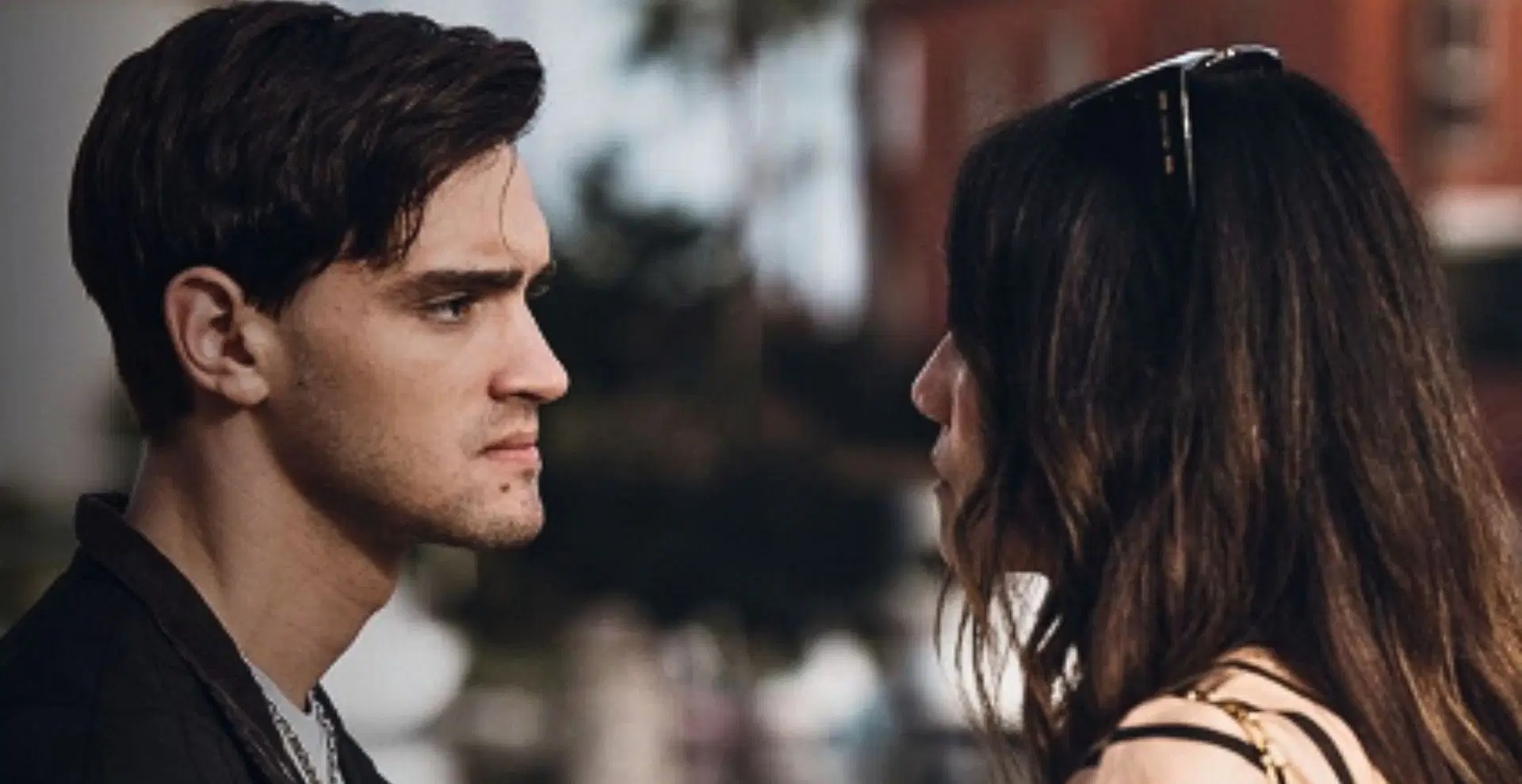When Your Fault gets to its final stretch, the tension that has been piling up from the start reaches its highest point. The film does not take the easy route by offering clear answers or a soft landing. Instead, it challenges the audience to question what they’ve believed about each character from the beginning.
Every look, every silence, and every sudden reaction builds up to a finale that does not shy away from raw emotions. The title itself begins to take new meaning as the truth slowly peels itself back, scene by scene. The characters are not written to fit a simple good-or-bad label, and by the final act, their choices carry a weight that stays with the viewer.

As the story moves towards its ending, the secrets that were carefully kept begin to slip out. What seemed like harmless decisions early on turn out to have deeper consequences. This creates tension between the people involved, especially when trust starts to break.
The emotional weight between them cannot be ignored any longer, and this is when things take a sharp turn. It becomes clear that the truth will not bring peace—it brings discomfort and forces people to see each other for who they really are.
How the Final Scenes Build Pressure
The lead characters find themselves at a point where no one can pretend anymore. There is no hiding place left for their feelings, regrets, or mistakes. These closing moments are not built on action or spectacle but instead rely on the actors’ ability to express pain, regret, and guilt without saying too much. Their silence often says more than their dialogue. Each reaction becomes loaded with meaning because of everything that has come before it.
The director chooses to stretch these scenes, allowing every pause to land fully. There is no rush to get to the end. This choice gives the characters space to breathe but also keeps the audience on edge.
A single glance or a step forward can feel like an emotional punch. Nothing is overdone, yet everything is intense. Even the background remains quiet, allowing viewers to stay focused on the emotional clash happening between the main characters.
Breaking Down the Final Confrontation
The confrontation that closes the story is not loud, but it is heavy. There are no fireworks or sudden outbursts. Instead, the tension is low and slow like water ready to boil.
What makes this part work is how the characters come to the moment already worn out by everything they have gone through. They are not ready to fight anymore. What they want is to be understood or forgiven—or at least to speak their truth before walking away.
The blame is passed around without anyone clearly accepting it. They all have their reasons for what they did, and none of them are clean. That messy space between guilt and survival is what the story leans into.
The characters look each other in the eye and say things they had been afraid to admit. The silence after those admissions is loud. That stillness allows the weight of each word to land deeply.
The Emotional Cost of Their Choices
No one walks away from the ending of Your Fault feeling like a winner. Each person has lost something, even if they managed to save face. The emotional damage is hard to ignore.
This is the kind of ending that does not seek comfort. It leaves the characters in a state where forgiveness may be possible, but it will not come quickly. Their relationships may never return to what they used to be.
What makes it harder is that everyone involved had reasons for their actions. Even when those reasons were selfish or careless, they still came from real feelings. That makes it difficult to hate any single person completely.
The pain they caused was real, but so was the hurt they carried. The story refuses to give a single answer on who was right or wrong, instead showing how everyone has a part to play in what happened.
How Regret and Responsibility Shape the Ending
The title Your Fault starts to feel like something each character is silently telling themselves. Even if they point fingers at each other, deep down they know they also had choices they could have made differently.
Regret sits quietly beside each of them. It shows in the way they avoid each other’s eyes, in the way they speak softly even when they’re angry. These are people who have gone through something that has changed them.
The story makes room for regret, but it doesn’t turn it into punishment. Instead, it allows that feeling to stay with the characters, just as it would in real life. They are not given a final answer or easy way out. What they have instead is the weight of their actions and the hope that someday they might be able to live with it. This quiet pain is what lingers as the credits roll.
What the Ending Suggests Without Saying Too Much
The last few minutes of the film do not spell things out. Instead of telling the audience what to think, it invites them to consider what might come next. The silence, the space between words, and the way each character exits the scene suggest that healing is possible—but not promised. The story leaves room for interpretation without being confusing.
This approach respects the viewer’s intelligence and emotional awareness. It trusts that people can sit with discomfort and understand that some stories do not have a clean wrap-up.
What it shows is that sometimes the hardest part is not what happened, but what it left behind. The emotional wreckage does not disappear when the screen fades to black.
Why the Ending Works Without Giving Closure
People looking for a complete wrap-up may not find it here. The film chooses honesty over comfort. It presents a situation where even though the truth has come out, it does not magically fix what was broken. That honesty is what gives the story its strength. The characters are left standing in the damage they helped create, and there is no easy way forward.

This kind of finish may not please everyone, but it stays true to the story that came before it. Nothing was ever simple, and no one ever had the full picture. By the time the credits begin, the viewer understands that this was never about a perfect ending. It was about facing reality and accepting the cost of past decisions.
The Impact of Leaving Some Things Unsure
Allowing the final scenes to hold back a full explanation works in favour of the film’s message. There are hints and clues, but no loud answers. That uncertainty matches what real people face when hard moments happen. Not everything is clear. Not every person gets closure. The film ends where real conversations often pause, somewhere between truth and confusion.
This choice gives the story room to breathe after it’s done. Viewers are left with thoughts they carry beyond the film itself. They think about what might happen next, how each character might deal with what just happened, and whether peace is ever going to come. This lingering effect is part of what gives the story its staying power.
Why the Characters Remain in the Mind Long After
After watching Your Fault, it is hard to forget the characters. They do not just feel like parts in a film. They feel like people who could live next door, people who made mistakes and now have to figure out how to live with them. This grounded feeling is what gives the story its emotional punch. It does not go too far. It stays close to what real life often feels like.
By refusing to tie everything together at the end, the film allows each person to sit with what they saw. It creates a quiet space where thoughts can rise, where emotions settle slowly. And it is in that silence, after everything has been said and done, that the story continues to speak.
Your Fault can be found online for those interested in watching. It is currently available for streaming on Amazon Prime Video and Apple TV, and can also be rented or purchased through Google Play Movies and Vudu. Whether you are watching for the first time or returning for a second viewing, the emotional weight of this film continues to linger long after it ends.
Updated (Jun 22, 2025 at 12:13)



